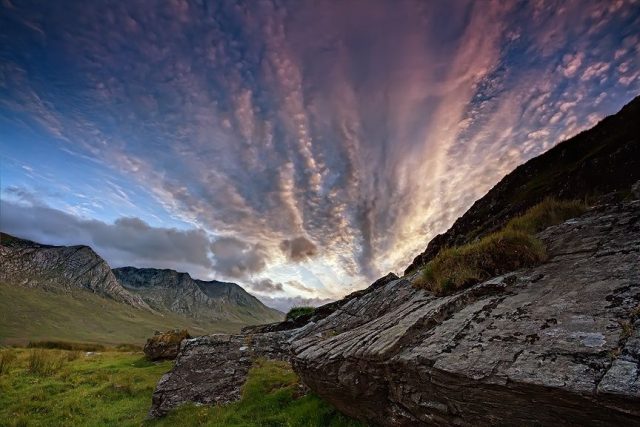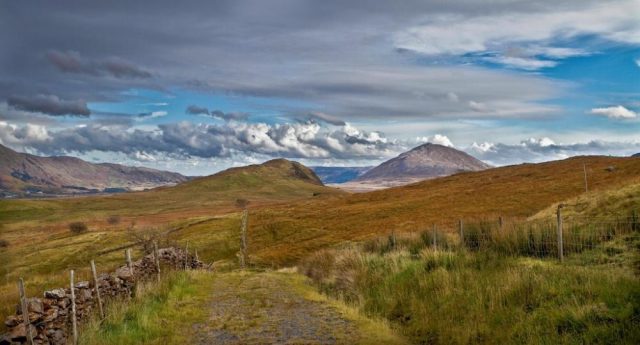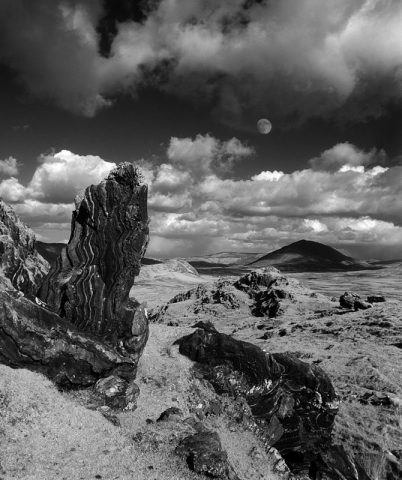
Mám Éan, Connemara
For your Pro-D day, you’re going to spend a little time with an old friend of our Grade 7s, John O’Donohue. Grade 7s, you might remember that we listened to a CBC podcast with him last year – what Tapestry host, Mary Hynes said was “the single-most requested interview we’ve ever broadcast.”
This term, we have been exploring the work of Ojibway writer (and former Burnaby resident!) Richard Wagamese. As you may have discovered, one of the Big Ideas in Wagamese’s work is that of connecting to place: connecting to the land and the landscape; learning from the natural world. We also know that in A Wizard of Earthsea, the specifics of place play a big role in the development of the story; and I’ve asked you to make that a strong focus in the planning for your graphic novel work – how do you convey the specific character of the place(s) in your chapter?
The below task is in aid of developing our idea of the nature of place, which is a Big Idea in our Social Studies work this year.
Your work is to listen to this recording of John O’Donohue hiking up Mám Éan Mountain in Connemara, in western Ireland. While you listen, you’ll record your thoughts and then share your ideas in class next week, but first, please read the below instructions carefully.
1. The recording is about 45 minutes long – depending on your capacity right now to listen for extended periods of time, you may want to divide the listening into two shorter sessions. At just after the 24:00 mark, the audio repeats itself for about a minute (up to the 25:20 mark), so that might be a natural spot to take a break, if you find you need one.
2. While you listen, please use your large paper to draw and write as you go. This can be like sketchnoting; it can also be like drawing images that come into your mind and writing down words or phrases that you like or that have meaning to you. You might consider doodling in the margins while you listen, if that helps you stay engaged. Basically, draw and write what you hear.
There is a “transcript” button on the Youtube page, which will pull up a very rough, error-prone AI-generated transcript in the Comments box. You don’t have to use this, but you can if you like. If you were not at school on Thursday, use paper from home, or your comp book.
3. After you listen to the whole recording, take some time to generate ideas about the below. If you have space, add those ideas to the front of your paper; if you don’t have space on the front, add them to the back:
- What did you think was interesting?
- What questions do you have? What didn’t you understand and/or what question(s) might be fun or interesting to ask in a class discussion?
- How is what O’Donohue shared connected to what you have learned so far about Wagamese?
- How might what you have heard from O’Donohue influence your work on A Wizard of Earthsea?
- How does this change the way you think about and/or experience the landscape around you?
- How does this changes the way you think about the landscape within you?
- Why – for you, or for the world – might his way of thinking might be useful or meaningful?
Here are a few bits of vocab that might be useful to know before you begin:
Nonchalant – having an air of easy unconcern or indifference
Zen – a state of calm attentiveness in which one’s actions are guided by intuition rather than by conscious effort (related to Zen Buddhism)
Bog – a poorly drained usually acid area rich in accumulated plant material
Cadence – a rhythmic sequence or flow of sounds
The Twelve Bens – a mountain range in Connemara
Pathos – an element in experience or in artistic representation evoking pity or compassion
Anonymous – of unknown authorship or origin; lacking individuality or distinction
Cutting turf – in the past, Irish people heated their homes and cooked their food using turf taken from from the bog as fuel. Turf was cut from the bog by hand, using a two-sided spade called a sleán.
Sod – the grass-covered surface ground layer
Karl Marx – a socialist revolutionary
Dialectic – discussion and reasoning by dialogue as a method of intellectual investigation
If you are able to, after you listen, go back outside and take a look around. If you are able to go to a place where you can see the North Shore mountains, do that, too.
How has your perspective shifted? What do you see now that you didn’t before?
I go among trees and sit still.
All my stirring becomes quiet
Around me like circles on water.
My tasks lie in their places
Where I left them, asleep like cattle…
Then what I am afraid of comes.
I live for a while in its sight.
What I fear in it leaves it,
And the fear of it leaves me.
It sings, and I hear its song.
~ Wendell Berry

The Mám Éan Pilgrimage Walk

“Moon Over Maam Valley,” by Fergus Bourke
